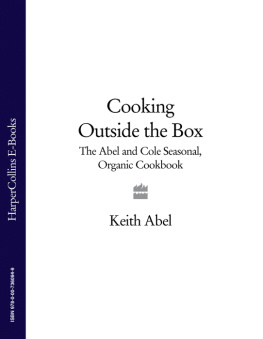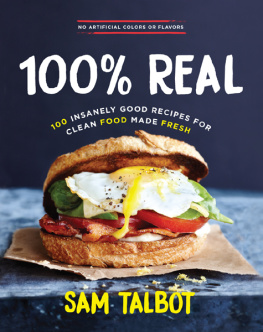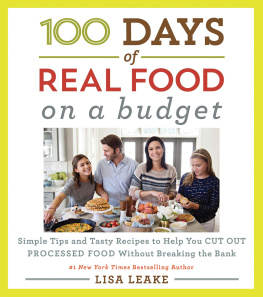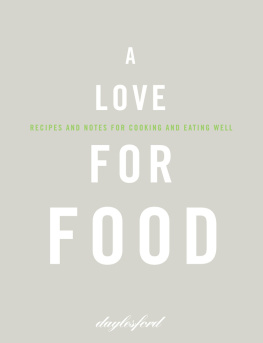The Working Class Foodies Cookbook

THE
WORKING
CLASS FOODIES
COOKBOOK
100 Delicious Seasonal and Organic Recipes for Under $8 per Person
REBECCA LANDO

GOTHAM BOOKS
Published by the Penguin Group
Penguin Group (USA) Inc., 375 Hudson Street,
New York, New York 10014, USA

USA | Canada | UK | Ireland | Australia | New Zealand | India | South Africa | China
Penguin Books Ltd, Registered Offices: 80 Strand, London WC2R 0RL, England
For more information about the Penguin Group visit penguin.com.
Copyright 2013 by Rebecca Lando
All rights reserved. No part of this book may be reproduced, scanned, or distributed in any printed or electronic form without permission. Please do not participate in or encourage piracy of copyrighted materials in violation of the authors rights. Purchase only authorized editions.
Gotham Books and the skyscraper logo are trademarks of Penguin Group (USA) Inc.
LIBRARY OF CONGRESS CATALOGING-IN-PUBLICATION DATA
Lando, Rebecca.
The working class foodies cookbook : 100 delicious organic dishes for under $8 / Rebecca Lando.
pages cm
Includes bibliographical references.
ISBN: 978-1-101-60992-7
1. Natural foods. 2. Low-budget cooking. I. Title.
TX369.L355 2013
641.302dc23 2012043512
Designed by Elke Sigal
Photographs by Kit Pennebaker
Illustrations on pages by Daisy Edwards;
all other illustrations by Rebecca Lando
EWG chart on copyright Environmental Working Group, www.ewg.org.
Reprinted with permission.
Storing Fresh Fruits and Vegetables for Best Flavor chart on courtesy
of Produce for Better Health Foundation.
While the author has made every effort to provide accurate telephone numbers, Internet addresses, and other contact information at the time of publication, neither the publisher nor the author assumes any responsibility for errors or for changes that occur after publication. Further, the publisher does not have any control over and does not assume any responsibility for author or third-party websites or their content.

To my family, for raising me to love good food,
humoring my obsessive tastes, and always
encouraging me to follow my passions;
to Kathleen for being the first and best
champion of Working Class Foodies;
to my Next New Networks family for
their support and encouragement;
and to Kit for putting up with my insistence
on always seeking out good foodand being willing
to taste every dish and experiment along the way.

Part I

EVOLUTION
OF A WORKING
CLASS FOODIE
Chapter One
My Quest to Eat Well on a Tight Budget
A fter my freshman year of college, I vowed never to touch processed food again. I moved to an apartment-style dorm with a kitchen in Union Square. My mom armed me with a heavy-duty Dutch oven and I spent a few dollars on a used skillet at a flea market. There was a Food Emporium supermarket across the park from my dorm, but I quickly learned that the produce sold there was no better than the mealy apples and oranges from my freshman dorm. I tried instant ramen for the first time and found that, even for 15 a package, I couldnt bear to eat it. At the same time, it slowly dawned on me that on my Spartan working class budget, my fresh food options would be as dismal as the offerings on my old freshman meal plan. If I wanted to eat good foodfresh vegetables, whole grains, meat that wasnt vacuum-packed in Styrofoam to achieve an unnaturally long shelf lifeI would have to learn not only how to cook and how to budget but also how to approach both from a new, creative angle.
One morning, I stepped out of the apartment and saw that Union Square Park had become a tent city. Jostling through the crowds, I allowed the flow of foot traffic to sweep me under one of the tents and found myself surrounded by dusky red, tannic green, and hazy, yellow-freckled pink applesvarieties I never knew existed. I was in the heart of the Union Square Greenmarket. I fingered the $1.50 in change in my pocket and checked it against the acidic ache of hunger in my stomach. The apples smelled lightly of grass and honey, their skins dusty and unwaxed. I grabbed three apples, each from a bin labeled with an unfamiliar name, and approached the cashier. He weighed my apples without caring that one was a Mutsu and one a Pink Lady and one a Fuji. He gave me my apples and my change75.
Everything, suddenly, had changed. I could get three different kinds of apples, each crisp and plump, for less than one mealy, tasteless Red Delicious at the supermarket or in the dining hall. High-quality ingredients were literally right outside my doorand well within my meager price range. I learned that carrots can be purple, that the four or five varieties of radish tasted as different as they looked, that the grass-fed beef was so evenly marbled because it wasnt bulked up on extra fat at the end of its life, the way commercially raised meat is.
Buying my food directly from the farmers who grew it also changed my beginner cooking skills in the kitchen. I learned how much of the woody ribs on the black-soil Tuscan kale would have to be removed before steaming, and to save those ribs for making a better vegetable stock than could ever be found in a grocery store; I learned that red-skinned potatoes coated in butter and chives made a whole meal for a single dollar. But, in the end, I realized that instead of spending at least $20 a week on food, as I had originally budgeted, I could eat fourteen sparse but solid meals a week for about $8. Real local, seasonal, and where possible organic food was affordable, and it was delicious.
Being young, hungry, and broke didnt end after collegeand neither did the weekly farmers market haul. When my boyfriend, Kit, and I moved to an overpriced apartment on the overpriced Upper East Side, we gravitated to the small weekly farmers market a quarter mile away: Just like in college, the markets produce, fish, and meat were cheaper and better quality than the food at the supermarket closer to our apartment. Too broke to afford to eat in any of the high-profile restaurants we followed obsessively online and in magazines, we did our best to re-create the dishes at home in our tiny galley kitchen. We attempted to chronicle our cooking on a food blog, but after a long day at work, the gym, walking the dog, cooking, eating, and doing the dishes, we were too tired to take good photos of the food or write eloquently about the meal. The food blog faltered and burned out almost as quickly as it started.


















